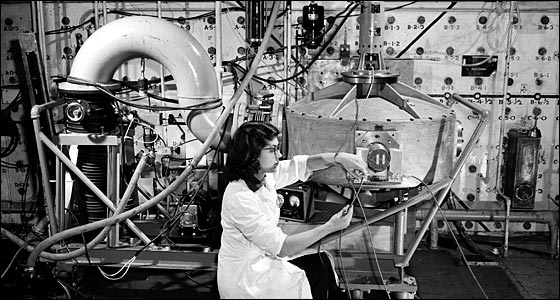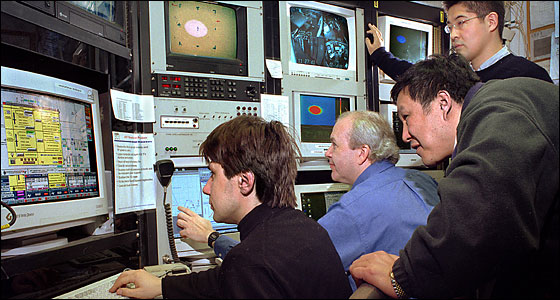Stop 4
Brookhaven Graphite Research Reactor

West of the Isotope Research and Processing Laboratory and the Counter Intelligence Office in Bldg. 801 stands the Brookhaven Graphite Research Reactor — the Laboratory's first big machine and the first reactor to be constructed in the United States for peaceful scientific research. From 1950 until 1968, scientists came from every corner of the U.S. to use subatomic particles called neutrons that were generated inside the BGRR to probe atomic nuclei; learn how radiation affected materials; and investigate physical, chemical, and biological systems. The reactor proved to be an excellent training tool for engineers as well.
Inside the reactor, uranium nuclei were split by neutrons. That split released more neutrons that then split more uranium releasing more neutrons and so on in a chain reaction called “nuclear fission.”
In one experiment at the BGRR, engine piston rings were irradiated to determine wear and other characteristics. This work led to the development of multi-grade motor oils, such as 10W-30, which is commonly used in our cars and trucks today. The process to extract the radioisotope technetium-99m was also developed here. This radioisotope is used to image almost any organ in the body in millions of medical procedures in the U.S. each year.
Before the reactor was placed on standby in June 1968 and then permanently shut down, scientists there performed an estimated 25,000 irradiations on specimens ranging from seeds to art treasures. The decommissioning process for the BGRR began in the late 1990s and is nearing completion with funds from the American Recovery and Reinvestment Act.
Accelerator Test Facility
 On your way to
the next stop, you can see Bldg. 820 on the far side of Renaissance Road. This large, warehouse-like structure
houses Brookhaven’s Accelerator Test Facility, which is run by the
Physics Department. Inside, scientists and engineers from around the world are
developing new methods to push particles to energies never before reached; produce x-rays never before as bright; and develop
smaller, more cost-effective particle accelerators of the future.
On your way to
the next stop, you can see Bldg. 820 on the far side of Renaissance Road. This large, warehouse-like structure
houses Brookhaven’s Accelerator Test Facility, which is run by the
Physics Department. Inside, scientists and engineers from around the world are
developing new methods to push particles to energies never before reached; produce x-rays never before as bright; and develop
smaller, more cost-effective particle accelerators of the future.


